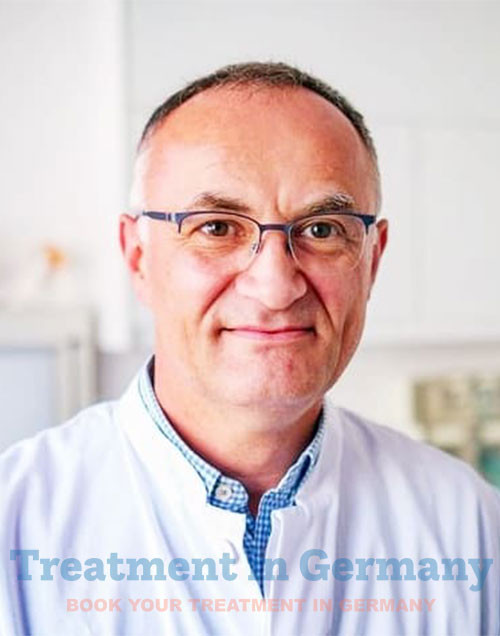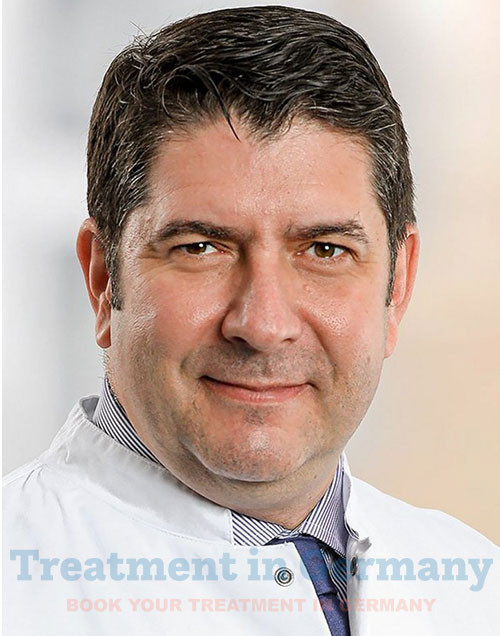The Department of Orthopedic and Joint Replacement Surgery is a specialty of medicine that specializes in the diagnosis, treatment, and management of musculoskeletal problems. This system, which comprises bones, joints, ligaments, tendons, muscles, and nerves, is essential for mobility and everyday function. The department specializes in the surgical treatment of joint issues, particularly joint replacements, which have grown more prevalent as individuals want to continue an active lifestyle long into their senior years.
Conditions Treated by the Department of Orthopedic and Joint Replacement Surgery
The Department of Orthopedic and Joint Replacement Surgery handles various musculoskeletal problems. These diseases may be caused by age, injury, overuse, or congenital abnormalities. Some of the most frequently observed issues treated include:
1. Osteoarthritis:
Osteoarthritis is a degenerative joint condition characterized by cartilage degradation, which causes pain, stiffness, and swelling. It mainly affects the knees, hips, hands, and spine. When conservative therapy fails to provide relief, joint replacement surgery is often advised.
2. Rheumatoid Arthritis:
Rheumatoid arthritis is an autoimmune disease that causes persistent joint inflammation, pain, swelling, and deformity. Joint replacement surgery may be required to restore function and alleviate discomfort in severely damaged joints.
3. Fracture:
The department also manages complicated fractures that need surgical intervention. To support the bone and encourage healing, orthopedic surgeons may employ internal fixation devices such as plates, screws, and rods.
4. Joint Injury:
Sports injuries, falls, and accidents may all cause significant joint injuries, such as dislocations, ligament tears, and cartilage injuries. The department provides surgical and nonsurgical therapies to repair and rehabilitate these injuries.
5. Joint deformities:
Congenital or acquired joint abnormalities, such as hip dysplasia or bow-leggedness, may require surgery. The section specializes in operations that realign or repair the damaged joint, improving function and attractiveness.
6. Avascular necrosis:
Avascular necrosis, also known as osteonecrosis, happens when the blood supply to a bone is cut off, resulting in bone loss and joint collapse. Joint replacement surgery may be required to alleviate discomfort and restore mobility in the afflicted joint.
Types of surgeries performed
The Department of Orthopedic and Joint Replacement Surgery provides various surgical techniques customized to each patient's requirements. Some of the most frequently performed surgeries are:
1. Arthroplasty (Total Joint Replacement)
Total joint replacement involves replacing a damaged joint with a prosthesis. The most frequent joint replacements are hip, knee, and shoulder. These treatments are very successful in reducing pain and restoring movement.
2. Partial joint replacement:
In other circumstances, only a portion of a joint is injured, and a partial joint replacement may be necessary. For example, in a unicompartmental knee replacement, only the diseased compartment of the knee is replaced, leaving the healthy components of the joint intact.
3. Revision Joint Replacement:
Revision surgery occurs when a previously implanted joint replacement fails due to wear, infection, or other problems. The surgeon removes the old prosthesis and replaces it with the new one.
4. Minimal Invasive Surgery (MIS):
Certain joint replacement operations use minimally invasive methods to lessen stress on the surrounding tissues, accelerate recovery time, and minimize scarring. These treatments require tiny incisions and specialized equipment.
5. Arthroscopy.
Arthroscopy is a minimally invasive surgical procedure for detecting and treating joint issues. The surgeon makes a tiny incision in the joint and inserts a small camera called an arthroscope. This enables the healing of joint injuries, such as torn ligaments or cartilage, without invasive surgery.
6. Osteotomy:
Osteotomy is a surgical operation that cuts and reshapes bone to cure joint abnormalities. This method often addresses knee or hip abnormalities in younger patients, delaying the need for joint replacement surgery.
7. Joint Fusion (Arthrodesis)
Joint fusion is the permanent union of two or more bones in a joint to relieve pain and increase stability. This surgery is often used for severe arthritis or joint instability, notably in the spine, wrists, and ankles.
The Patient Experience in Orthopedic and Joint Replacement Surgery
The patient path in the Department of Orthopedic and Joint Replacement Surgery is meticulously planned to guarantee a smooth and successful outcome. The department offers complete assistance at all stages, from first consultation to postoperative care.
1. Initial consultation:
The patient's journey starts with an initial visit with an orthopedic surgeon. During this appointment, the surgeon reviews the patient's medical history, does a physical examination, and may prescribe imaging tests such as X-rays, MRIs, or CT scans. The objective is to precisely identify the disease and discuss the most effective Treatment in germany choices.
2. Preoperative Planning:
Once surgery is judged essential, the patient goes through preoperative planning. This involves a comprehensive evaluation of the patient's general health, pre-surgical education, and conversations regarding the surgery's anticipated benefits and dangers. The patient may also see a physical therapist to begin rehabilitation activities.
3. Surgical procedure:
The patient is admitted to the hospital or surgical facility on the day of the procedure. The surgical team, which includes the orthopedic surgeon, anesthesiologist, and nursing staff, prepares the patient for the treatment. The procedure is done in a sterile environment, employing sophisticated surgical methods and equipment.
4. Postoperative Care:
After surgery, the patient is sent to a recovery area and carefully observed while they awaken from anesthesia. Pain control and early mobilization are essential aspects of postoperative treatment. Depending on the intricacy of the procedure, the patient may be required to remain in the hospital for many days.
5. Rehab:
Rehabilitation is a key part of the healing process. Physical therapists help patients regain strength, flexibility, and function in their damaged joints. Rehabilitation programs are customized to each patient's requirements and may last many weeks or months.
6. Follow-up Care:
The department offers continuous follow-up treatment to assess patients' development and resolve issues. Regular check-ups and imaging investigations may be necessary to guarantee the surgical success and lifespan of the joint replacement.
Advanced Technologies in Orthopedic and Joint Replacement Surgery
The Department of Orthopedic and Joint Replacement Surgery is at the forefront of medical innovation, using new technology to improve surgical accuracy, safety, and results.
1. Computerized Assisted Surgery (CAS):
CAS employs computer technology to help surgeons plan and conduct joint replacement surgeries. This device gives real-time feedback, resulting in more precise implant placement and alignment.
2. Robotic Assisted Surgery:
Robotic-assisted surgery uses robotic equipment to execute joint replacements with increased accuracy. The surgeon directs the robotic arm, which can perform exact motions, lowering the chance of mistakes and increasing results.
3. 3-D Printing:
Depending on the patient's anatomy, 3D printing produces individualized implants and surgical guidance. This technique enables individualized joint replacements that fit and operate better.
4. Enhanced Recovery Following Surgery (ERAS) Protocols:
ERAS protocols are evidence-based methods that enhance surgical results and minimize recovery time. These approaches involve preoperative optimization, minimally invasive techniques, and multimodal pain treatment.
5. Biologicals and Regenerative Medicine:
The department is also researching biologics and regenerative medicine to improve joint repair and recovery. Platelet-rich plasma (PRP) injections and stem cell treatment are two methods to improve healing and decrease inflammation in injured joints.
Research and education in orthopedic and joint replacement surgery.
The Department of Orthopedic and Joint Replacement Surgery is dedicated to developing the discipline through research and teaching. Clinical trials and research studies investigate novel surgical procedures, implant materials, and rehabilitation programs that might enhance patient results.
The department's educational programs prepare the future generation of orthopedic surgeons, physical therapists, and other healthcare professionals. These programs prioritize hands-on learning, mentoring, and cooperation, ensuring graduates are well-prepared to contribute to the field.
👉 Contact us for further information and receive a complimentary consultation.
The Department of Orthopedic and Joint Replacement Surgery provides a wide range of joint replacement treatments, including complete hip replacement, total knee replacement, shoulder replacement, partial knee replacement, and revision joint replacement surgery. These operations relieve pain, restore mobility, and enhance the quality of life for individuals with severe joint disorders.
The recovery time after joint replacement surgery varies depending on the kind of operation, the patient's general health, and adherence to postoperative care and rehabilitation guidelines. Patients should expect to resume their daily routine activities after 6 to 12 weeks. Full recovery, including recovering strength and mobility, may take anywhere from 6 months to a year.
Joint replacement surgery, like any other surgical operation, has risks such as infection, blood clots, implant loosening, dislocation, nerve injury, and anesthesia-related problems. However, these hazards are minimal, and most patients report considerable improvements in pain and function after surgery. Before the operation, the surgical team will review the risks and advantages for each patient.
Candidates for joint replacement surgery usually have significant joint pain, stiffness, and restricted mobility that does not respond to conservative therapies such as physical therapy, medicines, or injections. To decide if joint replacement surgery is the best choice for you, an orthopedic surgeon will assess your condition, analyze your medical history, and consider variables such as age, activity level, and general health.
Preparing for joint replacement surgery entails multiple phases, including preoperative exams, instructional sessions, and health improvement. Your surgeon may advise you to strengthen the muscles surrounding the afflicted joint, stop smoking, and manage any chronic health concerns. Furthermore, preparing for postoperative care, such as arranging for home support and establishing a recovery environment, is critical for a successful recovery.
Experience the difference that expertise and compassion can make. Meet our exceptional team of experienced doctors, and trust us to provide you with the best in healthcare.

Orthopaedic and Joint Replacement Surgery
Orthopaedic and Joint Replacement Surgeon, Krefeld, Germany
Krefeld

Orthopaedic and Joint Replacement Surgery
Medical Director of the Center for Musculoskeletal Surgery
Berlin


Orthopaedic and Joint Replacement Surgery
Orthopaedic and Joint Replacement Surgeon, Berlin, Germany
Berlin

Orthopaedic and Joint Replacement Surgery
Orthopaedic and Joint Replacement Surgeon, Berlin, Germany
Berlin

Orthopaedic and Joint Replacement Surgery
Chief Physician of the Center for Orthopedics and Trauma Surgery
Berlin

Orthopaedic and Joint Replacement Surgery
Specialist in Orthopedics and Trauma Surgery
Berlin

.webp)
.webp)
 (1).webp)
 (1).webp)


.webp)
.webp)
 (1).webp)
 (1).webp)

